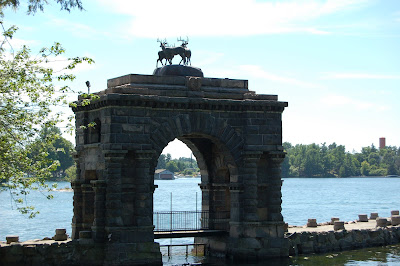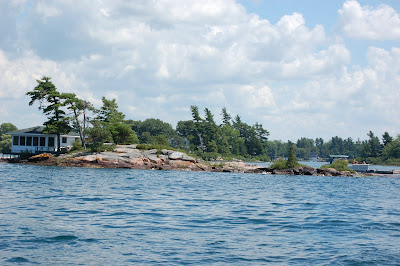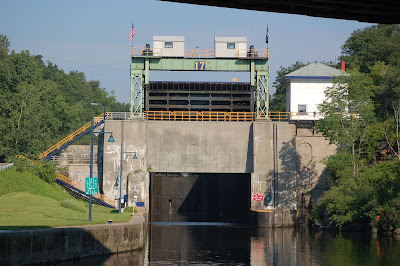We cruised West on the North Channel (of Lake Ontario) heading to Kingston, our first stop. First glimpse we got of Kingston was this tower (Murney Tower), one of four built to complement the fortifications of nearby Fort Henry. Fort Henry was built during the War of 1812 by the British (who then controlled Ontario) because they feared the United States would attack Kingston. The fort was never (ever) attacked.
We even had one of the towers in our marina as you can see in the two photos below, but we weren't too worried about being attacked:
The view of the tower from our boat.
In addition to the security of having an ancient military fortification in the marina, we had morning entertainment. Every day at 8 am, this bagpiper strolled the docks playing for us. I'll have to admit that bagpipe music is not one of my favorites, but it was pretty unique. Love the outfit, and no, I have no idea if he was wearing any.
Now that we were in Canada, we had to check in with Canadian customs, which they conveniently allowed us to do over the phone. That was the end of the convenience. Art got the customs inspector from hell who was pretty cranky, but even worse, he grilled Art endlessly about our liquor cabinet (and threatened to send an inspector down to check it out). We obviously had a few bottles on board, but this guy was relentless in his demand that we identify every single drop. It all ended with a bill for $128.00 to pay duty on our booze, which Art ponied up over the phone with his credit card. After that, we definitely needed a drink!
The rest of our stay in Kingston was quite nice, with great restaurants, nearby shopping and a really cool downtown. But we needed to move on and so we headed off early in the morning to Trenton, the next topic.





















































